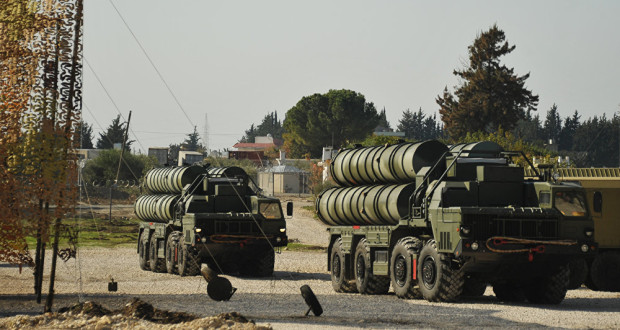1.The Arrival of the Su-25 Grach (NATO Reporting Name “Frogfoot”)
“The shootdown of the Su-24 Fencer near Turkish territory demonstrated the vulnerability of the unescorted attack aircraft to modern jet fighters,” reads Farley’s article for The National Interest magazine.
#SYRIA #FOOTAGE Combat sorties of Su-34 aircraft equipped with “air-to-air” missiles https://t.co/Ut7YqDAlX9 pic.twitter.com/rL4aNrD25k
— Минобороны России (@mod_russia) November 30, 2015
The best way to protect the Russian air fleet in Syria, the author says, is to bring in “a tough, heavy attack plane like the Su-25 Frogfoot, which can have an immediate impact on the battlefield. “
#SYRIA Near #Zaytan (#Idlib),Su25’s performed strike on Jabhat al-Nusra militants destroying 1 tank, 2 armored vehicles, 3 cars with mortars — Минобороны России (@mod_russia) November 26, 2015
“With some indication that Russia is about to massively step up its air campaign in Syria, we can be sure that additional attack aircraft, like the Frogfoot, will soon appear in the skies over rebel held territory,” the author says.
In any case, Russia as of now has as much as 12 of the most recent Su-25 ground assault planes in Syria, 12 considerably all the more capable Su-34 (NATO reporting name Flanker-C) strike contenders and up to 16 Su-30 (NATO reporting name Flanker-C) supermaneuverable fighter aircraft, aside from its current arrangement of Su-24s and Su-27s.
From November 20, the size of the Russian air armada in Syria was expanded to 69 airplane.
 Ọmọ Oòduà Naija Gist | News From Nigeria | Entertainment gist Nigeria|Networking|News.. Visit for Nigeria breaking news , Nigerian Movies , Naija music , Jobs In Nigeria , Naija News , Nollywood, Gist and more
Ọmọ Oòduà Naija Gist | News From Nigeria | Entertainment gist Nigeria|Networking|News.. Visit for Nigeria breaking news , Nigerian Movies , Naija music , Jobs In Nigeria , Naija News , Nollywood, Gist and more









